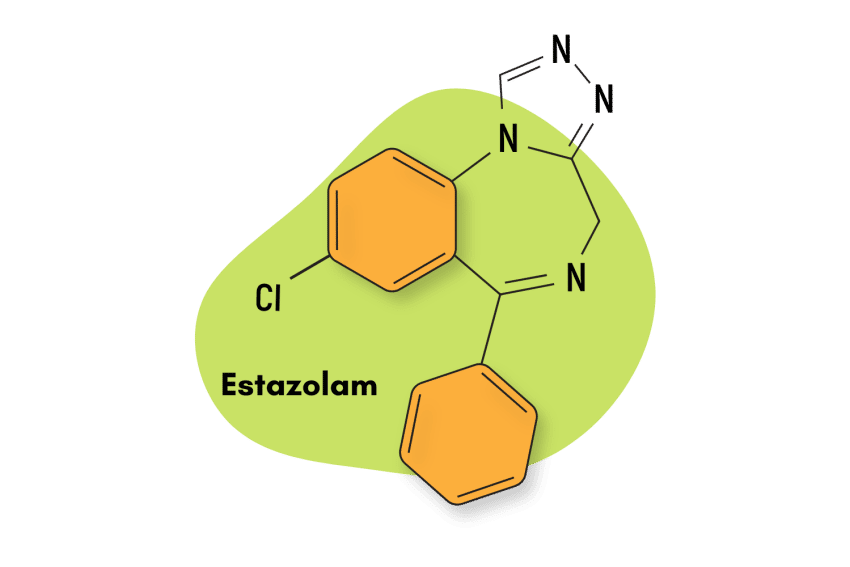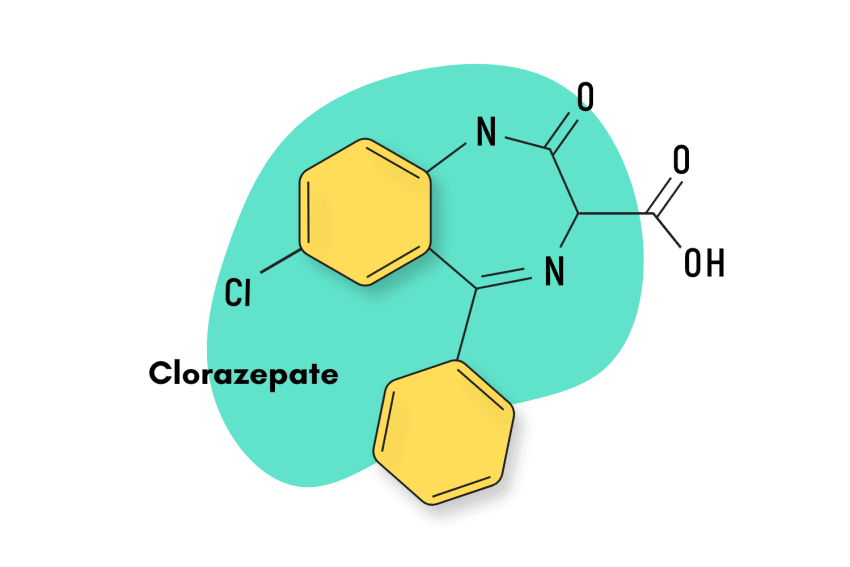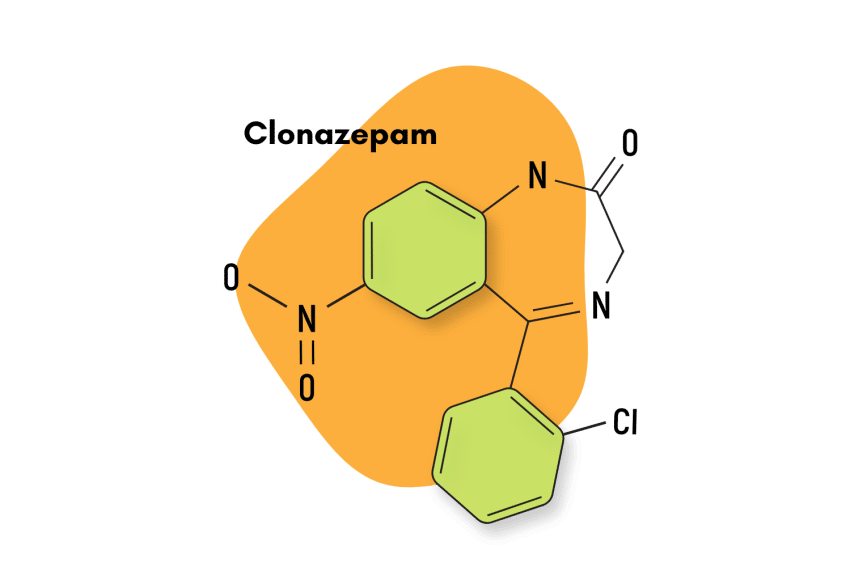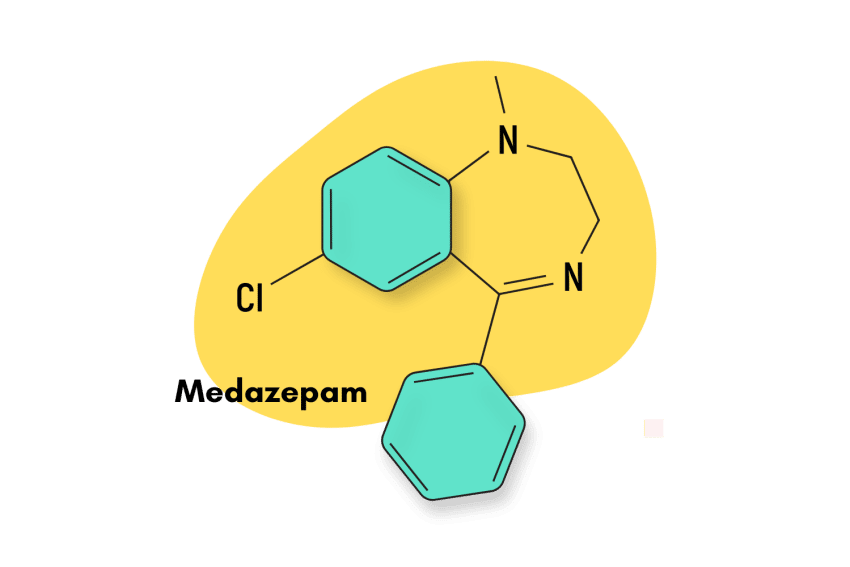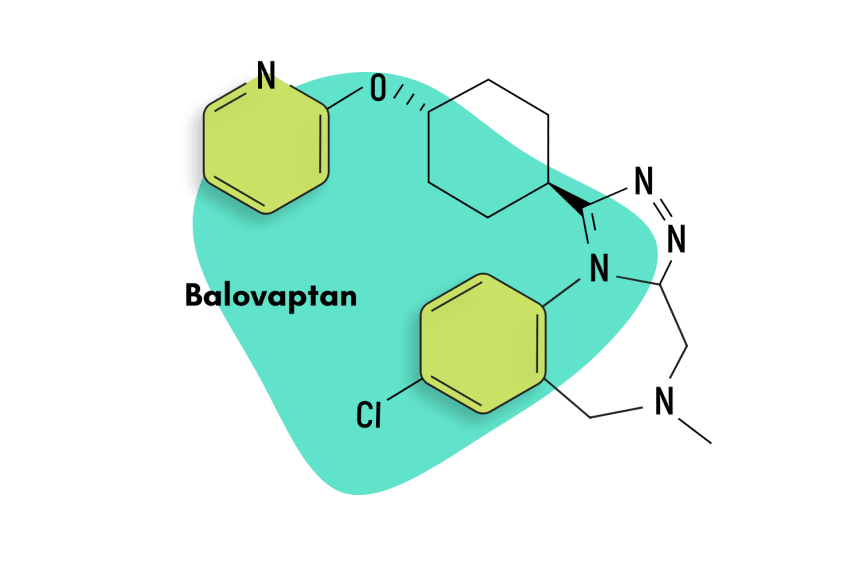Flutazolam (Coreminal): Fact Sheet & Harm Reduction Guide

Invented in the 1970s in Japan, flutazolam, also known as Coreminal or MS-4101, is a benzodiazepine derivative belonging to the subtype known as the oxazolobenzodiazepines. It has anxiolytic, anticonvulsant, hypnotic, sedative, amnesic, and muscle-relaxant properties.
The oxazolobenzodiazepine benzodiazepines are not often used in medicine but are pretty popular in the designer drug community due to their long-lasting effects.
In the case of flutazolam, there isn’t much evidence to suggest its popularity as a recreational drug, but it has been formally acknowledged as an NPS or “new psychoactive substance.”
The effects of this drug are strongly inebriating and sedative, so there’s good reason to assume this drug is popular among recreational users.
As a medication, flutazolam is indicated for the symptomatic relief of certain psychosomatic disorders like irritable bowel syndrome, chronic gastritis, and stomach ulcers, as well as the treatment of anxiety and stress-related conditions.
Flutazolam (Coreminal) Specs
| Status | Approved Medication (only in Japan) |
| Common Dosage | Unspecified |
| PubChem ID | 3398 |
| CAS# | 27060-91-9 |
IUPAC Name:
10-chloro-11b-(2-fluorophenyl)-7-(2-hydroxyethyl)-3,5-dihydro-2H-[1,3]oxazolo[3,2-d][1,4]benzodiazepin-6-one
Other Names: Coreminal and MS-4101
Metabolism
The metabolism of flutazolam occurs in the liver, where it is transformed through hydrolysis [1]. The main metabolic byproduct of flutazolam is the benzodiazepine n-desalkylflurazepam, also known as norflurazepam [2].
Duration of Effects
Flurazepam has a short elimination half-life of around three to five hours. However, its main metabolic byproduct, norflurazepam, is much longer-lasting, stretching the clearance of flutazolam and its byproducts roughly into 50 to 100 hours.
Benzodiazepine Dosage Equivalency Calculator
**Caution:** Benzodiazepines have a narrow therapeutic window. Dose equivalents may not be accurate in higher doses.
This calculator does not substitute for clinical experience and is meant to serve only as a reference for determining oral benzodiazepine equivalence.
Please consult a medical practitioner before taking benzodiazepines.
How Does Flutazolam (Coreminal) Work?
Flutizolam, like most other benzodiazepines, works by essentially “boosting” the activity of GABA — the body’s primary neuroinhibitory messenger.
By enhancing the way GABA works in the body, flunitazolam can suppress the nervous system — reducing excessive thoughts and anxiety and causing muscles all over the body to relax. In high enough doses, this inhibitory effect causes sedation and sleep.
However, this is only a partial picture common to almost every benzodiazepine compound. To acquire a complete view of any given benzodiazepine’s effects profile, it is necessary to incorporate other factors like pharmacokinetics and potency, which have been shown to significantly affect the pharmacology of benzodiazepines as well as the situations they are clinically effective.
In the case of flutazolam, we know that in terms of potency, it is roughly equal to diazepam, making it a benzodiazepine of average potency. We also know that it’s a partial agonist rather than a full agonist. Unlike full agonists, partial agonists can only elicit a limited reaction at a receptor site. Usually, partial agonists have weaker effects and produce fewer side effects.
The clinical literature also tells us that flutazolam has marked sedative effects. However, flutazolam, as such, has a limited half-life (three to five hours) and quickly converts into another benzodiazepine drug called norflurazepam, which produces fewer inebriation effects. However, norflurazpem is a popular compound in the designer drug community, which implies it’s still quite psychoactive.
Since flutazolam consumption also implies the presence of norflurazepam, it is also relevant to mention that the latter compound is unique in that it binds to both the BZ1 and BZ2 receptor sites on the GABA-A receptor [3].
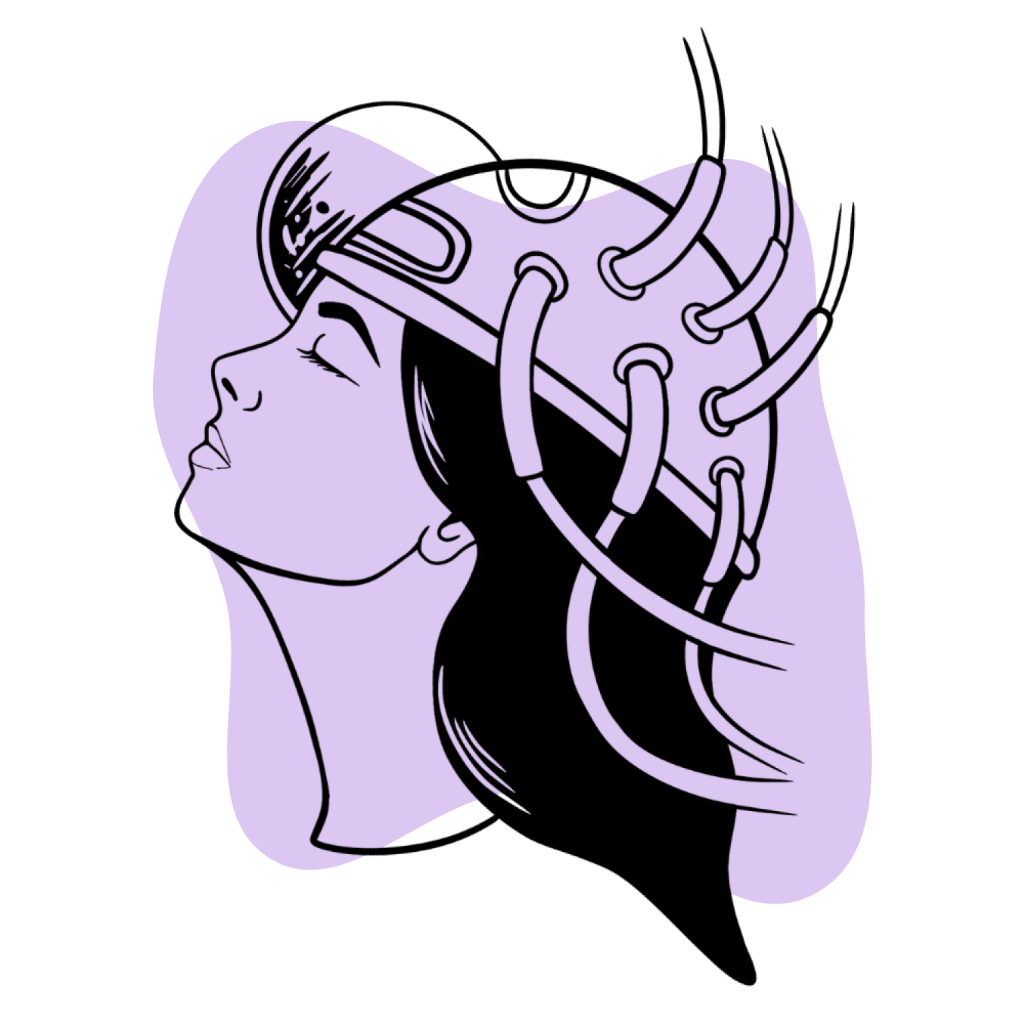
Is Flutazolam (Coreminal) Safe? Risks & Side Effects
All non-atypical benzodiazepines, including flutazolam, share a similar baseline level of risk that must be understood and respected.
When proper care is taken, it’s generally agreed upon that benzodiazepines are safe.
However, when the possibility of drug abuse and accidental misuse is factored into the equation, benzodiazepine use can be risky.
Recent statistics in the United States can attest to this, as the explosion in polydrug abuse has led to a marked increase in benzodiazepine-related fatalities. For instance, a recent study by the National Institute on Drug Abuse (NIDA) found that 16% of opioid overdose deaths also registered the presence of a benzodiazepine [1].
Another 2020 survey conducted by the CDC helps us put these figures into context: it concluded that, in that year, benzodiazepines were involved in a total of 12,190 deaths in the United States [2].
It’s important to understand that most of these deaths occurred due to misuse (combining with other drugs, taking high doses to get high, or taking in spite of known contraindications).
Understanding how different factors affect the risk level of a given benzodiazepine is also important. There are many things we can point out when it comes to flutazolam.
First off, in terms of potency, flutazolam seems to be a relatively average benzodiazepine, so there’s no special risk there. In fact, its status as a partial receptor agonist means it can’t elicit as strong a response as full agonists, which implies that events like overdoses are less likely to happen.
There is some cause for concern in other areas, though. Due to the long elimination half-life of flutazolam, there is a risk of accumulation, especially due to consecutive daily use.
Additional risks stem from the fact that flutazolam is available for purchase on unregulated websites. These websites often carry mislabelled or adulterated drugs that could cause significant harm to the user.
Because of the marked hypnotic effects of flutazolam, this drug is popular with recreational users. This group has the highest chance of causing harm due to misuse and abuse.

Side Effects of Flutazolam
No clinical literature is available on flutazolam’s specific side effects profile. However, we know flutazolam shares a similar structure to another benzodiazepine, triazolam (Halcion). Given that all benzodiazepines share a standard range of side effects, we can assume these compounds have at least comparable profiles in this regard.
The following side effects have been linked with the related drug, triazolam:
- Confusional states
- Congestion
- Constipation
- Coordination disorders/ataxia
- Cramps/pain
- Depression
- Dermatitis
- Diarrhea
- Dizziness
- Drowsiness
- Dry mouth
- Dysesthesia
- Euphoria
- Headache
- Insomnia
- Less common side effects may include:
- Light-headedness
- Memory impairment
- Nausea/Vomiting
- Nervousness
- Nightmares
- Paresthesia
- Tachycardia
- Taste alterations
- Tinnitus
- Tiredness
- Visual disturbances
- Weakness
Benzodiazepine side effects are usually strongest at the start of treatment and, in most cases, can be brought under through a dosage reduction.
Additionally, when it comes to hypnotic benzodiazepines, such as flutazolam, the cessation of treatment can bring on what is known as rebound insomnia, the sudden reappearance of insomnia-related symptoms.

Benzodiazepine Withdrawal & Dependence
When users take the proper care to avoid benzodiazepine misuse, and the risks of serious health events can be largely written off, the chief concern then becomes the avoidance of physical dependence and associated withdrawal symptoms. Indeed, the possibility of physical dependence is a well-recognized consequence of benzodiazepine use, and users must take measures to hedge against it.
Before this possibility was understood, doctors used to prescribe benzodiazepines with almost reckless abandon. Unfortunately, there is still a lot of work to be done to correct the misconceptions this behavior instilled in the general public. Indeed, many people still hold the incorrect and dangerous belief that dependence on prescription drugs can only come about as a result of misuse.
Nowadays, doctors take all sorts of precautions to hedge against the risk of dependence in their benzodiazepine patients. Research has shown which two factors are the most important to control: the duration of treatment and the dosage consumed. Limiting these two factors is the best way to avoid the formation of benzodiazepine dependence. However, other factors can come into play. For instance, research has shown benzodiazepines with short elimination half-lives cause dependence more often and may even trigger withdrawal.
Due to the risks inherent in benzodiazepine withdrawal symptoms, the sudden cessation of benzodiazepine use is never recommended. If a user no longer wants to use benzos, they should get in touch with their doctor so that slow discontinuation may be planned.
In the event that withdrawal symptoms appear, a user should immediately seek help from a doctor. Due to matters related to GABA receptor tolerance and the consequent failure to regulate hyperactive states, benzodiazepines withdrawals are uniquely dangerous when compared to other types of withdrawal. If left unattended, they can even become deadly.

Harm Reduction Tips: Flutazolam (Coreminal)
Here are some tips and tricks for staying safe while using benzodiazepine drugs:
- 🥣 Don’t mix — Mixing benzodiazepines with other depressants (alcohol, GHB, phenibut, barbiturates, opiates) can be fatal.
- ⏳ Take frequent breaks or plan for a short treatment span — Benzodiazepines can form dependence quickly, so it’s important to stop using the drug periodically.
- 🥄 Always stick to the proper dose — The dosage of benzos can vary substantially. Some drugs require 20 or 30 mg; others can be fatal in doses as low as 3 mg.
- 💊 Be aware of contraindications — Benzodiazepines are significantly more dangerous in older people or those with certain medical conditions.
- 🧪 Test your drugs — If ordering benzos from unregistered vendors (online or street vendors), order a benzo test kit to ensure your pills contain what you think they do.
- 💉 Never snort or inject benzos — Not only does this provide no advantage, but it’s also extremely dangerous. Benzos should be taken orally.
- 🌧 Recognize the signs of addiction — Early warning signs are feeling like you’re not “yourself” without the drug or hiding your habits from loved ones.
- ⚖️ Understand the laws where you live — In most parts of the world, benzodiazepines are only considered legal if given a prescription by a medical doctor.
- 📞 Know where to go if you need help — Help is available for benzodiazepine addiction; you just have to ask for it. Look up “addiction hotline” for more information about where you live. (USA: 1-800-662-4357; Canada: 1-866-585-0445; UK: 0300-999-1212).
Diazepam Drug Interactions
The most considerable risk associated with benzodiazepines is the concomitant use of other compounds that can depress the CNS. This type of interaction can have a potentiating effect, and the resulting effect can be a lot stronger than a user might suspect. An over-depressed CNS is extremely risky because of the possibility of severe respiratory depression. These interactions account for the vast majority of drug-related fatalities.
The most dangerous drug combinations to avoid with flutazolam (and other benzodiazepines) include alcohol, GHB, phenibut, opiates, barbiturates, other benzodiazepines, and Z-drugs.

Contraindications For Flutazolam (Coreminal)
A contraindication refers to a set of conditions or pre-existing factors that increase the level of individual risk for taking a specific medication. Contraindications are used to help doctors avoid significant interactions when prescribing medications.
Here are the contraindications associated with flutazolam and most other benzodiazepines:
- Bronchitis
- Chronic obstructive pulmonary disease (COPD)
- Conjunctive use of barbiturates, opiates, or those suffering from alcoholism
- Intellectual disabilities due to frequent paradoxical reactions
- Lactation
- Major depression
- Myasthenia gravis
- Over the age of 65 (high risk)
- Personality disorders
- Pregnancy
- Sleep apnea
Similar Benzodiazepine Alternatives
What few studies exist on flutazolam suggest it has a certain degree of similarity with the following benzodiazepines:
Diazepam (Valium)
Flutazolam and diazepam (Valium) have a lot in common. In terms of potency, they’re pretty much identical, and the two compounds seem to have comparable metabolic profiles as they both produce long-acting pharmacologically active compounds once they’re metabolized. They also seem to be largely similar in their effects profile, with the major difference being flutazolam’s emphasis on hypnotic effects.

Haloxazolam (Somelin)
Research has shown that flutazolam has a comparable chemical structure to haloxazolam (Somelin), which often suggests at least some level of pharmacological similarity. Similarly to flutazolam, haloxazolam shows a strong affinity towards the sedative side of the benzodiazepine spectrum.
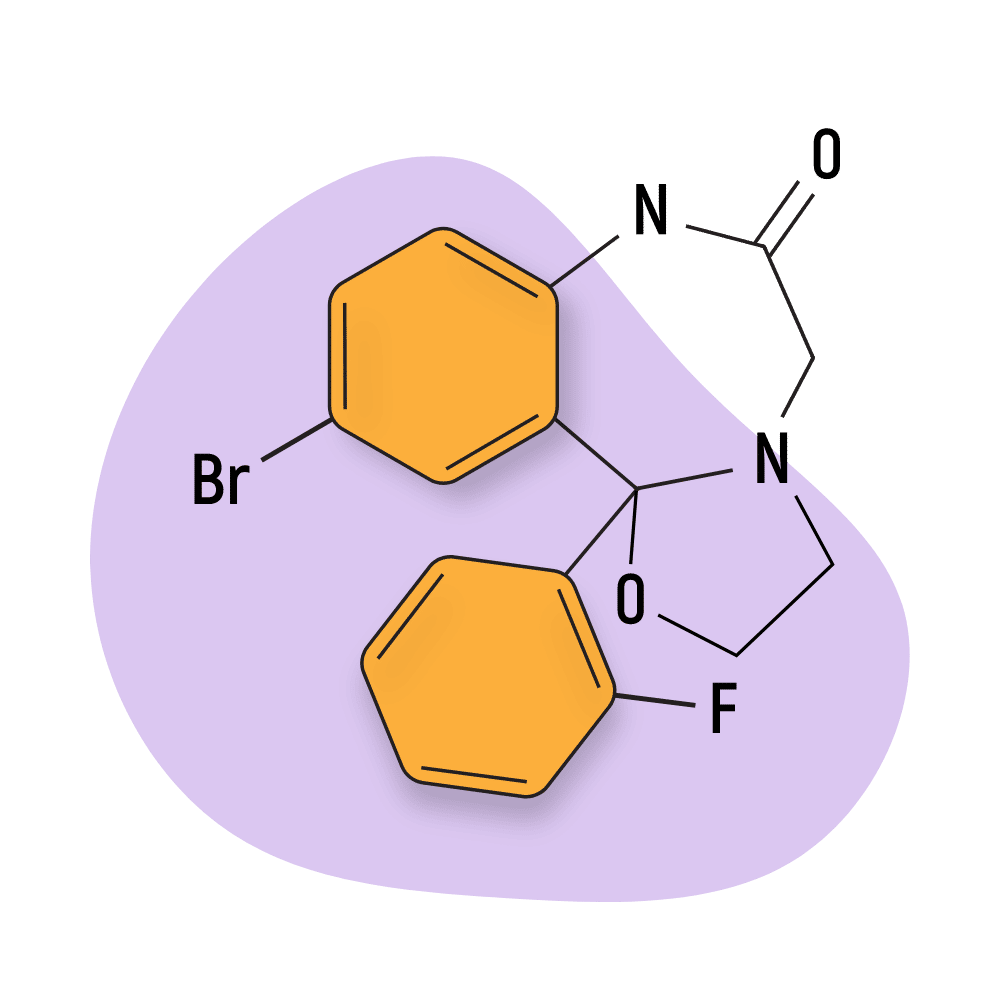
Triazolam (Halcion)
Triazolam (Halcion) is considered the premier sedative benzo — although it’s been largely replaced these days with the safer Z-drug family of medications.
The effects of triazolam are very similar to flutazolam — both drugs cause significant sedative effects and are popular among recreational users for their inebriating actions. The main difference between these drugs is the dose. Triazolam is exceptionally potent — the common dosage range is just 250 to 500 micrograms. For comparison, flutazolam’s common dose range is around 10 milligrams. This makes triazolam nearly 20 times the potency of flutazolam.
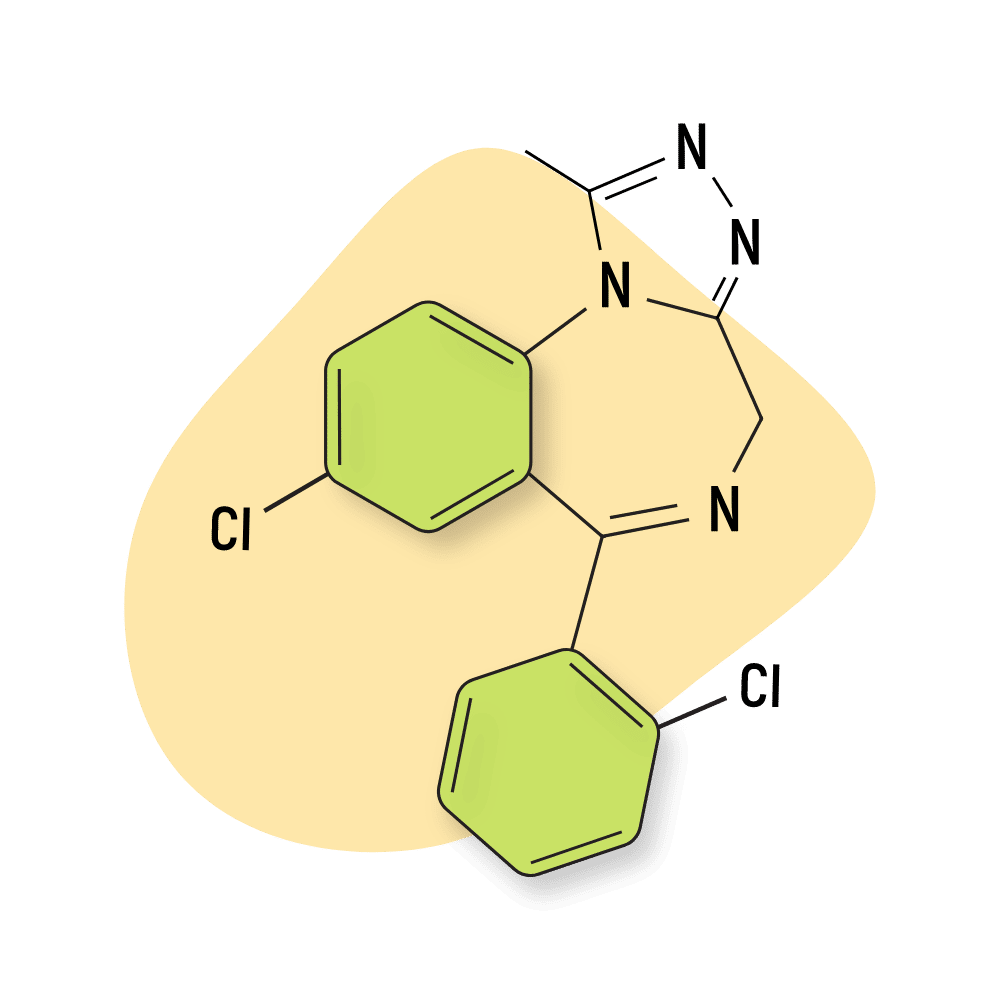
Natural Alternatives to Benzodiazepines
Natural, plant-based compounds like kava, valerian, or kratom are widely regarded as the best natural alternatives to benzodiazepines. All three plants contain substances that exert a similar effect on the GABA receptors as synthetic benzos — albeit much gentler.
Plant-based anxiolytics or sleeping aids are not nearly as powerful as benzos and won’t work for everybody — but they also carry a significantly lower risk of adverse reactions, dependency, and overdose.

Flutazolam (Coreminal) FAQs
In what formulation is flutazolam sold?
Flutazolam is sold in oral tablets of either 4 or 10 mg and is available for purchase online.
How does flutazolam compare with diazepam in terms of its effects?
A rat study that attempted to find the differences between these two compounds had the following conclusions [3]:
- Flutazolam suppressed hyperemotionality in septal rats, fighting behavior in long-term isolated mice, and pentylenetetrazol convulsion and potentiated thiopental sleep. These effects were the same in potency as those of diazepam.
- Flutazolam was more potent than diazepam in reducing spontaneous locomotor activity and potentiating the stimulant effect of methamphetamine on locomotor activity.
- On the other hand, suppression of hyperemotionality, potentiation of ethanol-induced anesthesia, prevention of maximal electroshock, prevention of strychnine convulsion, and muscle relaxant effect of flutazolam were less potent than with diazepam.
- Flutazolam also had an anticonflict effect, which was less potent than that which was seen with diazepam.
- Suppression of locomotor activity was potentiated by chronic administration of flutazolam but disappeared with chronic administration of diazepam.
References
- Kuwayama, T., Kurono, Y., Muramatsu T., Yashiro, T., & Ikeda, K. (1986). The behavior of 1, 4-Benzodiazepine Drugs in Acidic Media. V.: Kinetics of Hydrolysis of Flutazolam and Haloxazolam in Aqueous Solution. Chemical and pharmaceutical bulletin, 34(1), 320-326.
- Miyaguchi, H., Kuwayama, K., Tsujikawa, K., Kanamori, T., Iwata, Y. T., Inoue, H., & Kishi, T. (2006). A method for screening for various sedative-hypnotics in serum by liquid chromatography/single quadrupole mass spectrometry. Forensic Science International, 157(1), 57-70.
- Mitsushima, T., & Ueki, S. (1978). Psychopharmacological effects of flutazolam (MS-4101)(author’s transl). Nihon Yakurigaku zasshi. Folia Pharmacologica Japonica, 74(8), 959-979.

